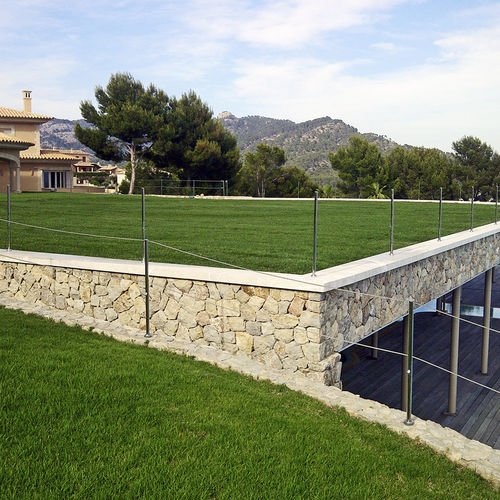Generally speaking, lawns can be established on roofs using seed or turf just as they can on the ground. If using lawn turf, a quality suitable for sandy soil must be chosen. The choice of the right lawn type and build-up is vitally important. The future use of the lawn must be clearly decided. Once this has been established, the appropriate green roof build-up and lawn type can be determined together with the correct water and fertiliser management system.
Compared with natural soil, additional attention has to be paid to irrigation and nutrient supply for a roof lawn. An uninterrupted supply from the start is important. A dug garden releases nutrients and also receives a subsequent supply of moisture from below. This is not the case with substrate on a roof. For environmental reasons, fertilisers are not added to substrates. Therefore, increased fertilisation and if necessary more frequent irrigation is required.
In order to ensure a green lawn even during dry periods, a professional irrigation system should be integrated into the green roof. This may be in the form of pop-up sprinklers or a sufficiently compact dripperline irrigation system.
The levels recommended by fertiliser manufacturers are usually too low for roof substrates, particularly for the initial stages. In any case, it is good to keep to the upper limit (usually for sandy soils) or to even exceed that and to fertilise in a timely manner.
A regular and clean cut will reduce high levels of evaporation loss and will provide for an ongoing good appearance.












